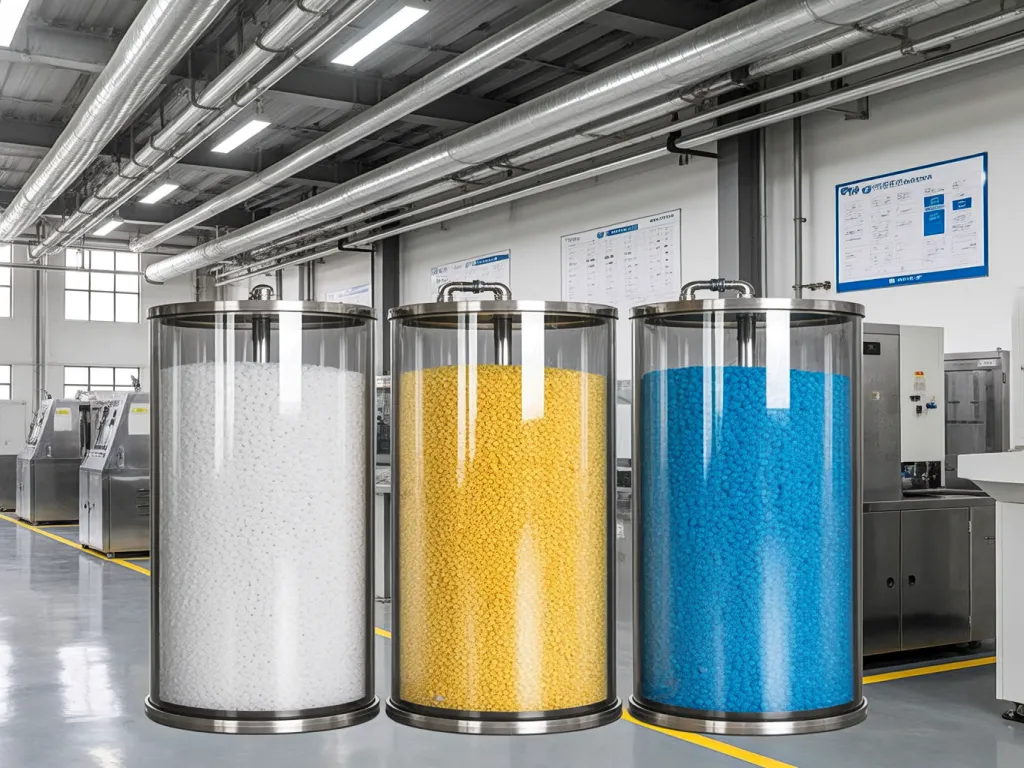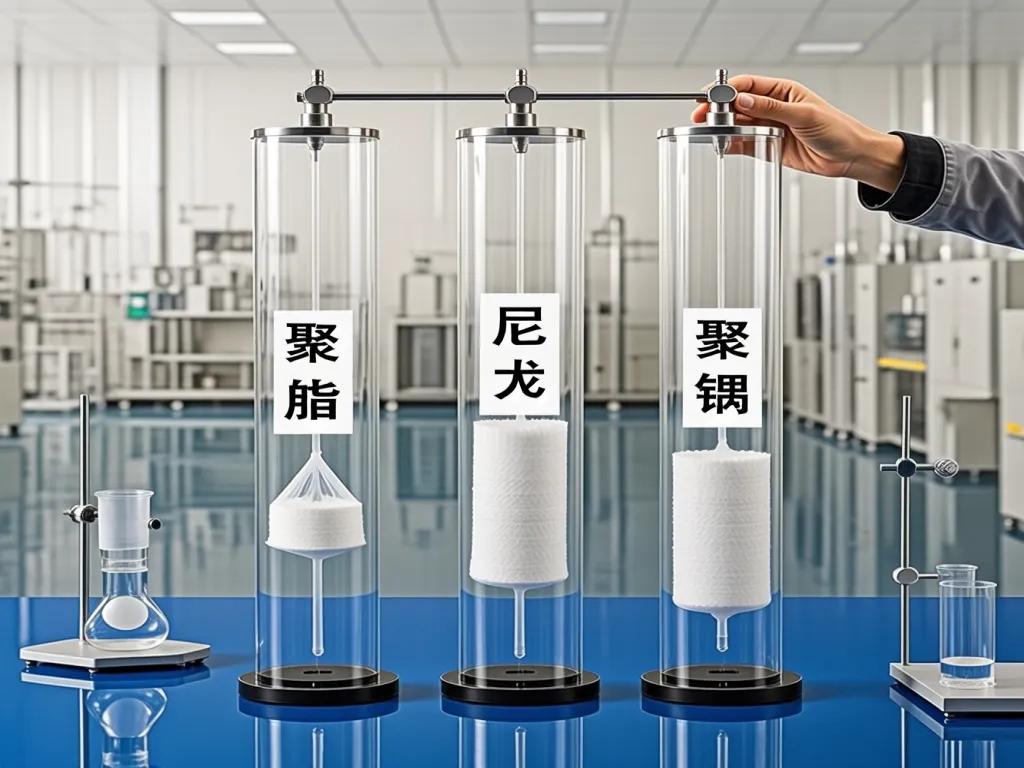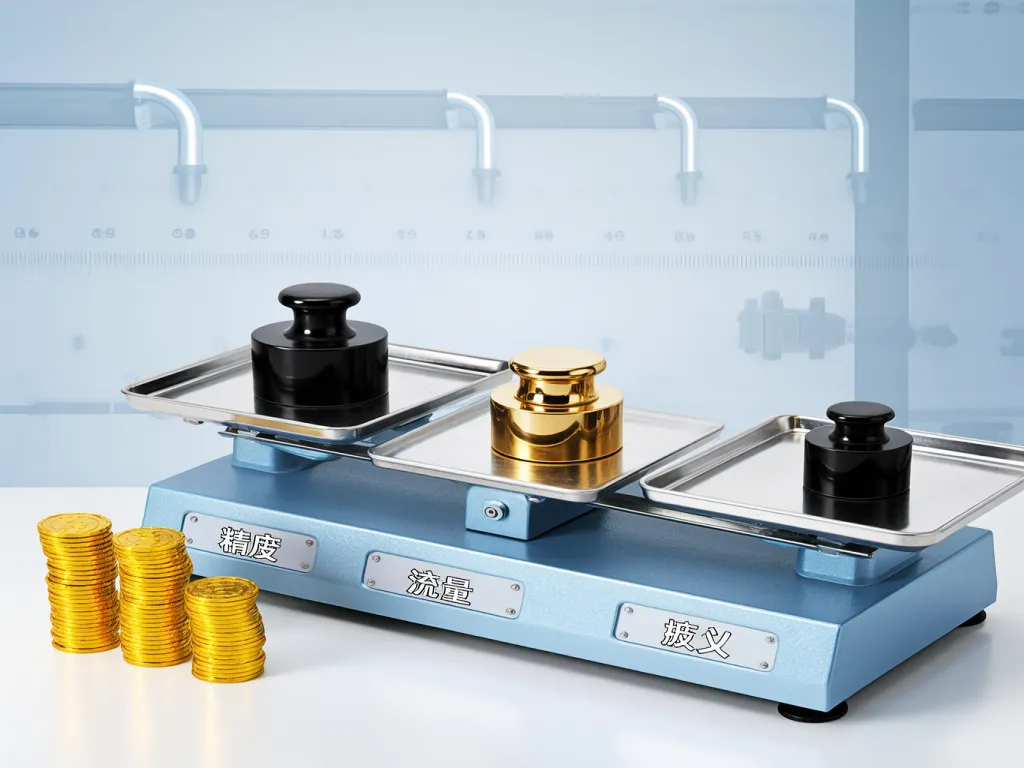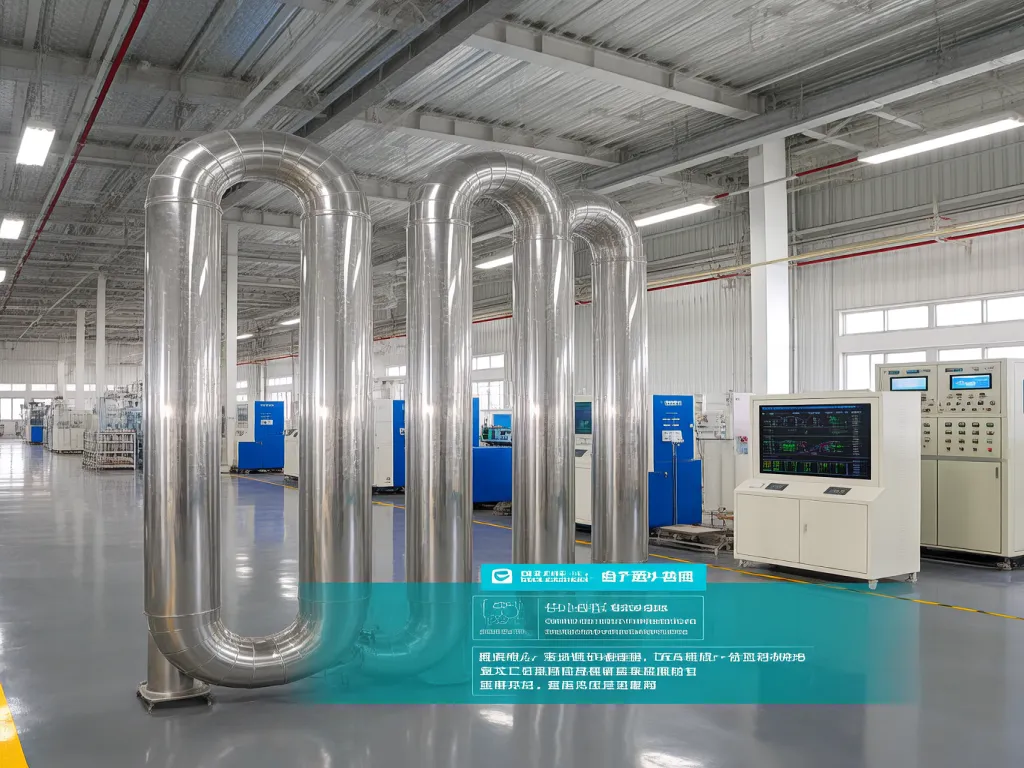Unlock Efficiency: Industrial Liquid Filter Bag Guide

In high-flow industrial settings, every drop of efficiency counts. That’s where industrial liquid filter bags step in—but with so many options, how do you choose the right one? From polyester’s durability to polypropylene’s cost-effectiveness, this guide dives into material comparisons, efficiency trade-offs, and real-world success stories. Ready to cut through the noise and find your perfect filter match?

Material Comparison: From Polyester, Nylon to Polypropylene, Exploring the Pros, Cons, and Application Scenarios
When it comes to industrial liquid filter bags, the choice of material can make or break your filtration system’s performance. You’re not just picking a bag; you’re selecting a partner that will handle your liquid’s impurities, flow rates, and chemical compositions day in and day out. So, let’s dive deep into the world of polyester, nylon, and polypropylene—the three titans of industrial liquid filtration. For those seeking high-efficiency and durable solutions, understanding these materials is crucial. Polyester: The Workhorse of Filtration Polyester is like that reliable friend who’s always there when you need them. It’s strong, durable, and can withstand a wide range of temperatures and chemical environments. One of its standout features is its excellent resistance to abrasion, making it ideal for applications where the filter bag might come into contact with rough particles or high-velocity flows. But polyester isn’t just tough; it’s also versatile. Whether you’re filtering water in a municipal treatment plant or handling aggressive chemicals in a pharmaceutical process, polyester can often get the job done. However, it’s not without its limits. Polyester can struggle with extremely high temperatures or certain harsh chemicals, so always check the compatibility before diving in. Nylon: The Precision Performer If polyester is the workhorse, then nylon is the precision performer. Nylon filter bags are known for their exceptional strength-to-weight ratio and their ability to maintain structural integrity even under high pressure. This makes them perfect for applications where fine filtration is crucial, such as in the food and beverage industry or in pharmaceutical manufacturing. Nylon also boasts excellent chemical resistance, though it’s not as universally resistant as polyester. It can handle a wide range of acids, bases, and solvents, but again, compatibility checks are a must. One downside of nylon is its cost. It tends to be more expensive than polyester, so you’ll need to weigh the benefits against your budget. Polypropylene: The Cost-Effective Champion If you’re looking for a cost-effective solution without compromising too much on performance, polypropylene might be your go-to material. Polypropylene filter bags are lightweight, have good chemical resistance, and can handle a variety of temperatures. They’re particularly popular in applications where cost is a major factor, such as in general industrial filtration or in pre-filtration stages. However, polypropylene isn’t as durable as polyester or nylon. It can degrade faster under UV light or in high-temperature environments, so it’s not the best choice for outdoor or high-heat applications. But for many indoor or moderate-temperature uses, polypropylene offers an excellent balance of performance and affordability. Choosing the Right Material for Your Application So, how do you choose between polyester, nylon, and polypropylene? It all comes down to your specific application. Are you dealing with high flow rates and rough particles? Polyester might be your best bet. Need fine filtration and chemical resistance? Nylon could be the winner. Looking for a cost-effective solution for general filtration? Polypropylene might fit the bill. Remember, the right material can save you money in the long run by reducing downtime, improving filtration efficiency, and extending the life of your filter bags. So, take the time to understand your needs and choose wisely.
Polyester: Strength and Versatility
Polyester’s strength lies in its ability to handle a wide range of conditions. Its resistance to abrasion means it can withstand the wear and tear of high-velocity flows and rough particles. This makes it a popular choice in industries like water treatment, where the filter bag must endure constant exposure to water and potential contaminants. Additionally, polyester’s versatility extends to its chemical resistance, allowing it to be used in various applications without fear of degradation. For those interested in durable and customizable solutions, polyester is often a top pick. However, always verify its compatibility with specific chemicals to ensure optimal performance.
Nylon: Precision and Durability
Nylon stands out for its precision in filtration. Its fine mesh structure allows for the capture of even the smallest particles, making it ideal for industries requiring high levels of purity, such as food and beverage or pharmaceuticals. Nylon’s durability under high pressure ensures that it maintains its shape and filtration efficiency, even in demanding environments. Despite its higher cost, the benefits of nylon often outweigh the initial investment, especially in applications where filtration quality is paramount. For those seeking high-efficiency solutions for both dust collection and liquid filtration, nylon is a strong contender.
Polypropylene: Affordability and Efficiency
Polypropylene offers an affordable alternative without sacrificing too much on performance. Its lightweight nature and good chemical resistance make it suitable for a variety of general industrial filtration applications. While it may not be as durable as polyester or nylon, its cost-effectiveness makes it an attractive option for pre-filtration stages or applications where the filter bag does not face extreme conditions. Polypropylene’s balance of performance and affordability makes it a popular choice among budget-conscious industries.

Filter Efficiency Analysis: Unraveling the Relationship Between Filtration Precision, Flow Rate, and Pressure Drop, and How to Balance Efficiency with Cost
When it comes to industrial liquid filtration, the term ‘efficiency’ isn’t just a buzzword—it’s the cornerstone of your operation’s success. You’re not just filtering liquids; you’re optimizing processes, reducing downtime, and saving costs. But how do you achieve this delicate balance between filtration precision, flow rate, and pressure drop? Let’s dive in.
Filtration Precision and Flow Rate Trade-off
First off, filtration precision is the measure of how effectively your industrial liquid filter bag can remove contaminants from the liquid. It’s like a sieve with tiny holes; the smaller the holes, the finer the particles it can trap. But here’s the catch: increasing precision often means reducing flow rate. Why? Because those tiny holes that block the contaminants also restrict the flow of liquid. It’s a classic trade-off, isn’t it?
The Role of Flow Rate in Industrial Applications
Now, let’s talk about flow rate. In high-flow industrial applications, you need a filter bag that can handle large volumes of liquid without causing bottlenecks. But if you focus solely on flow rate, you might compromise on filtration precision, leading to lower-quality output and potential equipment damage down the line. So, how do you find the sweet spot?
Understanding Pressure Drop
Enter pressure drop. This is the decrease in pressure as the liquid passes through the filter bag. A high pressure drop means your pump has to work harder, increasing energy consumption and operational costs. On the other hand, a low pressure drop indicates smoother flow but might come at the expense of filtration precision. It’s a balancing act that requires careful consideration.
Balancing Efficiency with Cost
So, how do you balance efficiency with cost? The key lies in understanding your specific application requirements. Are you dealing with highly viscous liquids that require high precision but can tolerate lower flow rates? Or are you in a high-volume, low-precision scenario where flow rate is king? Let’s break it down with an example. Suppose you’re filtering cooling water in a power plant. You need high flow rates to ensure efficient cooling, but you also can’t afford to let contaminants clog up your heat exchangers. In this case, you might opt for a filter bag with moderate precision and a low pressure drop to maintain flow while still capturing enough particles to prevent damage. On the flip side, if you’re filtering pharmaceutical-grade liquids where purity is paramount, you might prioritize precision over flow rate. Here, a filter bag with extremely fine pores is essential, even if it means accepting a lower flow rate and potentially higher pressure drop.
Long-term Cost Considerations
But wait, there’s more to it than just choosing between precision and flow rate. You also need to consider the long-term costs. A cheaper filter bag with lower precision might seem like a good deal upfront, but if it leads to frequent replacements, downtime, and equipment damage, it could end up costing you more in the long run. Conversely, investing in a high-quality, precision-engineered filter bag might have a higher initial cost but could save you money over time through reduced maintenance and improved efficiency.
Making the Right Choice
So, how do you make the right choice? Start by assessing your application’s specific needs. Consider factors like liquid viscosity, contaminant size and type, required flow rate, and acceptable pressure drop. Then, look for filter bags that meet these criteria while offering a good balance between precision, flow rate, and pressure drop. Don’t forget to factor in the long-term costs and potential savings from improved efficiency and reduced downtime. In conclusion, balancing efficiency with cost in industrial liquid filtration is all about understanding your application’s unique requirements and choosing a filter bag that meets those needs while optimizing performance. It’s not a one-size-fits-all solution, but with careful consideration and the right information, you can find the perfect fit for your operation.

Real-World Success Stories: High-Flow Industrial Applications with Industrial Liquid Filter Bags
When it comes to high-flow industrial applications, selecting the right industrial liquid filter bag can make or break your operation. Let’s dive into some real-world examples where businesses have hit the jackpot by choosing the perfect filter bag for their needs.
First up, let’s talk about a chemical processing plant that was struggling with excessive downtime due to clogged filters. They were using a generic filter bag that just couldn’t keep up with the high flow rates and corrosive chemicals in their process. After consulting with our experts, they switched to a polypropylene industrial liquid filter bag with a high surface area and excellent chemical resistance. The result? A 30% reduction in downtime and a significant increase in productivity. The plant manager couldn’t be happier, stating, ‘This filter bag has been a game-changer for us. We’re now able to run at full capacity without worrying about frequent filter changes.’
Next, consider a food and beverage company that needed to filter large volumes of liquid products like juices and syrups. They were facing issues with product quality due to inconsistent filtration. By opting for a nylon industrial liquid filter bag with a precise micron rating, they achieved uniform filtration, ensuring that every batch met their strict quality standards. The production manager shared, ‘The consistency in our products has improved dramatically since we started using these filter bags. Our customers have noticed the difference, and our sales have gone up as a result.’
Another compelling case comes from a pharmaceutical manufacturer. They required a filter bag that could handle high flow rates while maintaining sterile conditions. After extensive testing, they selected a polyester industrial liquid filter bag with a special antimicrobial coating. This not only prevented bacterial growth but also extended the filter’s lifespan. The quality control supervisor remarked, ‘These filter bags have exceeded our expectations. We’ve seen a significant reduction in contamination incidents, which has translated into lower costs and higher customer satisfaction.’
What do all these success stories have in common? They all involved a thorough understanding of the application requirements, careful selection of the filter bag material, and a focus on long-term performance and cost-effectiveness. It’s not just about picking the cheapest option; it’s about finding the right balance between quality, durability, and price.
So, how can you replicate these successes in your own industrial application? Start by assessing your specific needs. What’s the flow rate? What are the chemical properties of the liquid you’re filtering? How important is filter lifespan and maintenance frequency? Once you have a clear picture, consult with experts who can guide you towards the most suitable industrial liquid filter bag for your situation.
Remember, the right filter bag can transform your operation, just like it did for these businesses. Don’t settle for mediocre performance when you can achieve excellence with the right choice.
Chemical Processing Plant: Overcoming Corrosion and Downtime
The chemical processing plant’s experience highlights the importance of material selection. Polypropylene, with its excellent chemical resistance, was the ideal choice for their corrosive environment. The high surface area of the filter bag also contributed to its efficiency, allowing it to handle the high flow rates without clogging. For a deeper understanding of polypropylene’s properties and applications in filtration, you may refer to this comprehensive resource on polypropylene. This case underscores the need to match the filter bag material with the specific chemicals and flow conditions of your application.
Food and Beverage Company: Ensuring Product Consistency
For the food and beverage company, the key was achieving uniform filtration. The nylon filter bag’s precise micron rating ensured that only the desired particles were removed, maintaining the product’s quality. This example shows how even small variations in filter bag specifications can have a big impact on the final product. It’s a reminder to pay close attention to the filter’s micron rating and material properties when selecting a filter bag for food and beverage applications.
Pharmaceutical Manufacturer: Maintaining Sterile Conditions
The pharmaceutical manufacturer’s case demonstrates the importance of specialized features in filter bags. The antimicrobial coating on the polyester filter bag was crucial for preventing bacterial growth in a sterile environment. This highlights the need to consider additional features beyond just the base material when dealing with sensitive applications like pharmaceuticals. It also shows how investing in higher-quality filter bags can lead to significant long-term benefits, such as reduced contamination and lower costs.
Selecting the right industrial liquid filter bag isn’t just about specs—it’s about balancing performance, cost, and longevity. By weighing material properties, efficiency metrics, and real-world case studies, you’re equipped to make a choice that boosts productivity and slashes downtime. Why settle for ‘good enough’ when the best solution is within reach? Share this guide with your team or explore our product catalog to turn insights into action—your industrial application deserves nothing less.

